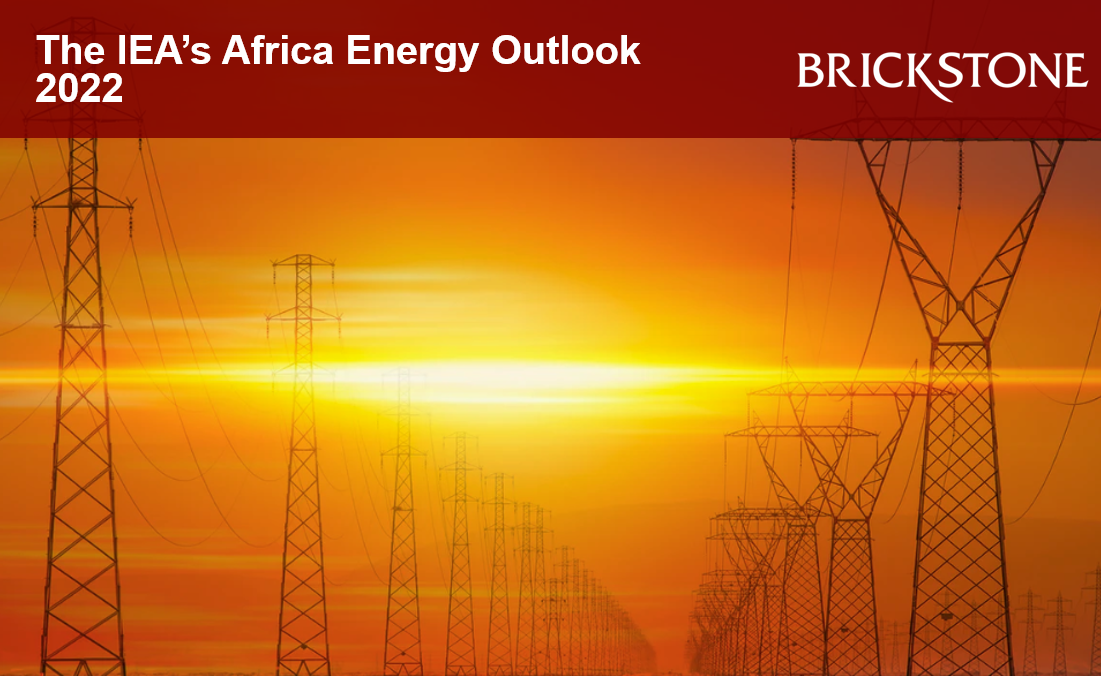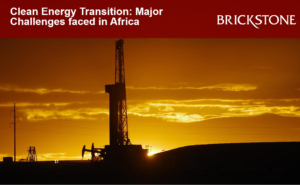The IEA’s Africa Energy Outlook 2022
The Africa Energy Outlook 2022 is a new special report from the International Energy Agency’s World Energy Outlook series. It explores pathways for Africa’s energy system to evolve toward achieving all African development goals, including universal access to modern and affordable energy services by 2030 and nationally determined contributions.
The report analyses infrastructure expansion needs, investment requirements, financing options and energy policy priorities. It also explores a shifting fuel mix that supports resilient development, opportunities for new exports, and just transition issues – including energy access, affordability and employment.
This article by Brickstone reviews IEA’s recent report on the Africa Energy Outlook 2022, highlighting key facts and takeaways.
The IEA’s Africa Energy Outlook 2022
Today’s global energy crisis has underscored the urgency, as well as the benefits, of an accelerated scale‐up of cheaper and cleaner sources of energy. Russia’s invasion of Ukraine has sent food, energy and other commodity prices soaring, increasing the strains on African economies already hard hit by the Covid‐19 pandemic. According to IEA, the overlapping crises are affecting many parts of Africa’s energy systems, including reversing positive trends in improving access to modern energy, with 4% more people living without electricity in 2021 than in 2019.
They are also deepening financial difficulties of utilities, increasing risks of blackouts and rationing. These problems are contributing to a sharp increase in extreme poverty in sub‐Saharan Africa, with the number of people affected by food crises quadrupling in some areas. Coupled with these setbacks are the adverse effects of climate change the continent is currently experiencing, all of which are fuelling mass migration and regional instability.
And for all of these difficulties, the global clean energy transition holds new promise for Africa’s economic and social development. The IEA’s Africa Energy Outlook 2022 report explores a Sustainable Africa Scenario (SAS) in which Africa rides these shifting tides to achieve all African energy‐related development goals on time and in full. This includes universal access to modern energy services by 2030 and the full implementation of all African climate pledges. Realising all of these goals is a formidable undertaking. African countries need to take the lead with clear strategies and policies, while international institutions must reinforce their commitment to significantly increase their levels of support.
The following are key facts and takeaways from the IEA’s Africa Energy Outlook 2022 report:
- Universal access to affordable electricity, achieved by 2030 in the SAS, requires bringing connections to 90 million people a year, triple the rate of recent years. At present, 600 million people, or 43% of the total population, lack access to electricity, most of them in sub‐Saharan Africa. Countries such as Ghana, Kenya and Rwanda are on track for full access by 2030, offering success stories other countries can follow. IEA’s analysis shows that extending national grids is the least costly and most prudent option for almost 45% of those gaining access by 2030. In rural areas, where over 80% of the electricity‐deprived live, mini‐ grids and stand‐alone systems, mostly solar based, are the most viable solutions.
- According to the IEA’s Africa Energy Outlook 2022 report, the goal of universal access to modern energy calls for investment of USD 25 billion per year. This is around 1% of global energy investment today, and similar to the cost of building just one large liquefied natural gas (LNG) terminal. Stimulating more investment requires international support aided by stronger national institutions on the ground laying out clear access strategies – only around 25 African countries have them today.
- Demand for energy services in Africa is set to grow rapidly; maintaining affordability remains an urgent priority. Africa has the world’s lowest levels of per capita use of modern energy. As its population and incomes grow, demand for modern energy expands by a third between 2020 and 2030 in the SAS. However, under existing subsidy schemes, current price spikes risk doubling energy subsidy burdens in African countries in 2022 – an untenable outcome for many facing debt distress.
- Electricity will underpin Africa’s economic future, with solar leading the way. According to the IEA’s Africa Energy Outlook 2022 report, electricity is the backbone of Africa’s new energy systems, powered increasingly by renewables. Africa is home to 60% of the best solar resources globally, yet only 1% of installed solar PV capacity. Solar PV – already the cheapest source of power in many parts of Africa – outcompetes all sources continent‐wide by 2030. Renewables, including solar, wind, hydropower and geothermal account for over 80% of new power generation capacity to 2030 in the SAS.
- Gas and oil production focuses on meeting Africa’s own demand this decade. Africa’s industrialisation relies in part on expanding natural gas use. Natural gas demand in Africa increases in the SAS, but it maintains the same share of modern energy use as today, with electricity generation from renewables outcompeting it in most cases. More than 5 000 billion cubic metres (bcm) of natural gas resources have been discovered to date in Africa, which have not yet been approved for development.
- Critical minerals present a major economic opportunity. According to IEA’s Africa Energy Outlook 2022 report, Africa’s vast resources of minerals that are critical for multiple clean energy technologies are set to create new export markets, but need to be managed well. Africa accounts for over 40% of global reserves of cobalt, manganese and platinum – key minerals for batteries and hydrogen technologies.
- Africa has huge potential to produce hydrogen using its rich renewable resources. A number of low‐carbon hydrogen projects are underway or under discussion in Egypt, Mauritania, Morocco, Namibia and South Africa. These are focused primarily on using renewables‐based power to produce ammonia for fertiliser, which would strengthen Africa’s food security. Global declines in the cost of hydrogen production could allow Africa to deliver renewables‐produced hydrogen to Northern Europe at internationally competitive price points by 2030.
- Achieving Africa’s energy and climate goals means more than doubling energy investment this decade. This would take it over USD 190 billion each year from 2026 to 2030, with two‐ thirds going to clean energy. The share of energy investment in Africa’s GDP rises to 6.1% in the 2026‐30 period, slightly above the average for emerging markets and developing economies. But Africa’s energy investment in that period is still only around 5% of the global total in the IEA’s Net Zero Emissions by 2050 Scenario. IEA affirms that multilateral development banks must make increasing financial flows to Africa an absolute priority
Download the full IEA’s Africa Energy Outlook 2022 report here.
Why not contact us to make your Project Happen
Our advisors and consultants would be able to schedule an online meeting with you to discuss your project with the overall objective of seeking ways to achieve the “bankability” and protection of the long term asset value of your project. Request a Meeting Now






